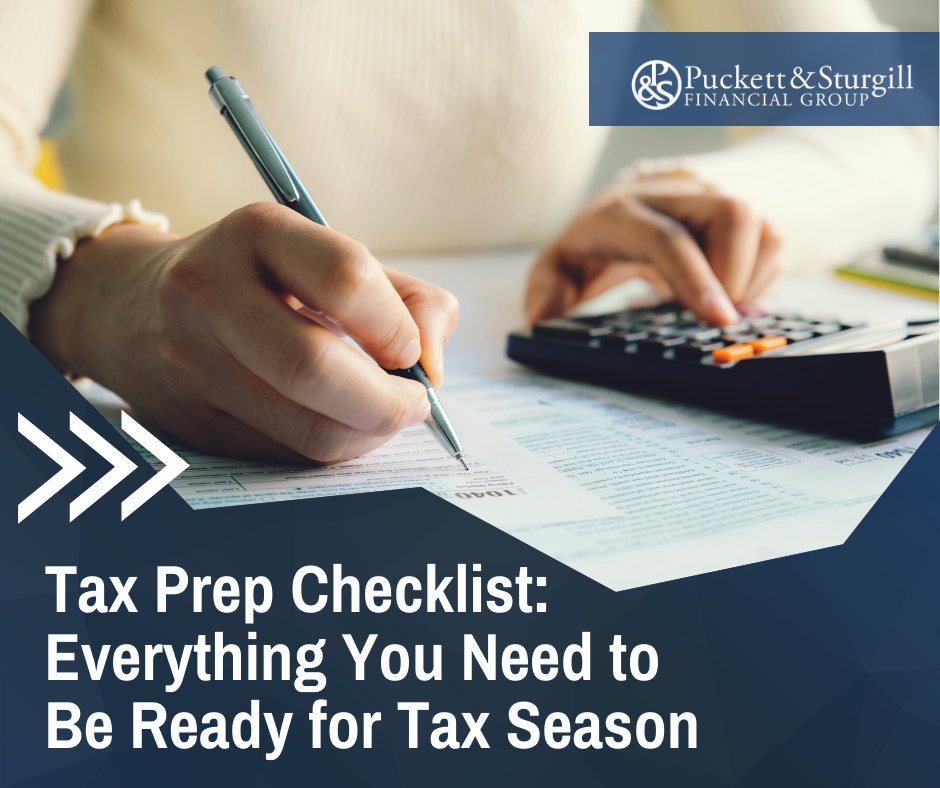With the signing of the Omnibus Appropriations package into law, both employees and employers can take advantage of more than 90 new provisions aimed at creating opportunities to create or modify workplace retirement plans and strategies. What to know about the Secure Act 2.0 that may impact you and your financial and retirement goals? Read below for a helpful overview of important information to know about the SECURE Act 2.0.
Key Points- Catch-up contribution changes
- Enhancement of tax credits for small business
- Changes to required minimum distributions (RMDs)
- Student loan payment matching
- Expansion of auto-enrollment
- Emergency plan modifications through a 401(k) plan
- Distribution of excess 529 assets to Roth IRAs
- Employer contributions to be offered to employees on a Roth basis
- SIMPLE and SEP contributions to be made on a Roth basis
- Self-correction and IRA violations without submission to the IRS
- Benefits for part-time and low to middle-income workers
Catch-up contribution increase and changes for earners over $145,000 Catch-up contributions allow you to put more money in your retirement savings accounts than the amount usually permitted for the year. This may enable people who have delayed saving or, for those who haven’t start yet, to “catch up” in pursuit of their retirement goals. There are two significant changes to the catch-up contributions. First, effective in 2024, all catch-up contributions for individuals earning more than $145,000 per year (indexed) must be made on a Roth, or after tax basis. This does not apply to SIMPLE plans. Second, beginning Jan. 1, 2025, individuals ages 60-63 will be allowed to make catch-up contributions to their workplace plan of up to $10,000 or 150 percent of the standard catch-up contribution amount for 2024 or whichever is greater. The $10,000 amount will be indexed to inflation each year starting in 2026. For SIMPLE Plans, the contribution limit is $5,000 or 150 percent of the regular SIMPLE catch-up ($5,520 in 2023), whichever is greater.
[i] Currently, catch-up contributions to a 401(k) account for anyone 50 or older are $6,500 (2022), scheduled to rise to $7,500 in 2023. These amounts are in addition to regular 401(k) contribution limits: $20,500 (2022) and $22,500.
[ii] Enhancement of tax credits for small businesses starting and maintaining a retirement plan Employers with up to 50 employees will be eligible for a credit equal to 100 percent of the amount contributed by the employer, up to $1,000 per employee. The employer receives a credit equal to 100 percent for years one and two (this phases down over five years), 75 percent for year three, 50 percent for year four, and 25 percent for year five. Small businesses with 51 to 100 employees are eligible for this tax credit for those above 50 employees and those earning less than $100,000 per year. For up to 50 employees, the current three-year start-up credit is equal to 50 percent of plan expenses, and up to $5,000 cap is increased to 100 percent.
Changes to the required distribution age Currently, required minimum distributions amounts – that must be withdrawn annually according to the law – begin at age 72. However, with the clearing of the SECURE Act 2.0, this age is expected to rise to 73 in 2023 and then to age 75 in 2033. Along with a change in age, the penalty for failing to make a required minimum distribution is also subject to change beginning next year. The penalty for failing to take an RMD will decrease to 25 percent of the RMD amount, from 50 percent currently, and 10 percent if corrected in a timely fashion.
[iii] Also, Roth accounts in 401(k) plans (different from Roth IRAs, which come with no RMDs during the owner’s lifetime) and other employer-sponsored plans will be exempt from RMDs starting in 2024. Additionally, beginning immediately, for in-plan annuity payments that exceed the participant’s RMD amount, the excess annuity payment can be applied to the following year’s RMD.
Matching contributions for student loan payments For some students, it is difficult to get into the routine of making student loan payments. However, a new provision in the SECURE Act 2.0 is aimed at encouraging younger workers to begin saving for retirement. Effective in 2024, employers will be permitted to make matching contributions under a 401(k), 402(b) or SIMPLE IRA plan based on a participant’s student loan repayments. Government employers would also be allowed to make matching contributions in a section 457(b) plan or another plan with respect to such repayments.
Required auto-enrollment and auto-escalation for most new plans Beginning in 2025, all new 401(k) and 403(b) plans will be required to include automatic enrollment for all eligible participants at a minimum of 3 percent and maximum of 10 percent of eligible compensation, and automatic escalation at one percentage point per year up to at least ten percent and a maximum of 15 percent. Plans in existence before the date of enactment would be grandfathered and not subject to these requirements. There is also an exemption for government plans, church plans, and employers with 10 or fewer employees, and new businesses within the first three years of operation. Additionally, the bill does not require an employer to have a plan, but instead applies only to employers deciding to start a plan.
Building financial confidence through an emergency fund In life, most individuals have had that unexpected expense occur, forcing them to revise their monthly budget. If they did not have an emergency fund available because they found it difficult to save money and simply do not have that kind of liquid cash on hand, they may be tempted to dip into their retirement savings to cover the bills. Two changes within the retirement legislation can make it easier for employees to set aside emergency funds. One modification would allow retirement plan sponsors to automatically enroll employees to set aside up to $2,500 of post-tax money in a separate emergency savings alongside their retirement accounts. With this, workers could defer money to the emergency savings accounts automatically through their payroll deduction. The other change would permit retirement plan participants to withdraw up to $1,000 from their retirement savings per calendar year to cover emergency expenses without being subject to any penalties.
[iv] The establishment of an emergency savings option within the context of a retirement plan is a progressive concept that can help employees become aware of the importance of setting aside savings for both short-term (emergencies) and long-term (retirement) needs.
Distribution of excess 529 assets to Roth IRAs Beginning in 2024, excess assets in a 529-qualified tuition program will be eligible for a tax-free distribution to a Roth IRA. Distribution is subject to the lesser of (a) the regular Roth IRA limits (without the income limits) or (b) the aggregate amount contributed to the 529 accounts over the previous five years (plus earnings). The beneficiary must be the same and maintained for at least 15 years. There is also a per-beneficiary lifetime limit of $35,000.
Permitting all employer contributions to be offered to employees on a Roth basis Effective immediately, employers can allow employees to elect for some or all of their vested matching and non-elective contributions to be treated as Roth contributions under a 401(k), 403(b), or governmental 457(b) plan.
Allowing SIMPLE and SEP contributions to be made on a Roth basis Effective for tax year 2024, SIMPLE and SEP contributions for employees and employers can be made on a Roth basis. The employee must elect for Roth treatment.
Self-Correction of Inadvertent Plan and IRA Violations without Submission to the IRS Effective immediately, all inadvertent plan violations may be self-corrected under the IRS’ Employee Plans Compliance Resolution System (EPCRS) without submission to the IRS. This does not apply if the IRS discovers the violation on an audit or if the self-correction is not completed within a reasonable period of time.
Benefits for part-time and low to middle-income workers Today’s workplace consists of a significant amount of part-time workers. Starting in 2025, part-time employees are required to work two consecutive years and complete at least 500 hours of service each year to be eligible to defer to their 401(k) plans. They will now be eligible to contribute to an employer-sponsored retirement plan. This is a modification of the SECURE Act’s three-years-of-service rule. Additionally, beginning in 2027, the SECURE Act 2.0 will revise the current Saver’s Credit. This credit provides millions of low and middle-income individuals with a “Saver’s Match,” which is a federal matching contribution deposited to a taxpayer’s IRA or retirement plan to encourage people to save for retirement. The change in the legislation alters the way you get the credit. Instead of having the credit applied against your tax liability when you file your tax return, the federal government will deposit a “matching contribution” directly into your retirement account. You get to pick which retirement account it goes into; however, a Roth account is not permitted, along with a few other stipulations.
[v] With so many new and modified provisions both immediately and soon-to-be available in the near future, it is encouraged that you consult a financial professional to help you navigate the legislation and see what may work for your retirement strategy and plans.
Important Disclosures: This material was created for educational and informational purposes only and is not intended as ERISA, tax, legal or investment advice. If you are seeking investment advice specific to your needs, such advice services must be obtained on your own separate from this educational material. The Roth IRA offers tax deferral on any earnings in the account. Withdrawals from the account may be tax free, as long as they are considered qualified. Limitations and restrictions may apply. Withdrawals prior to age 59 ½ or prior to the account being opened for 5 years, whichever is later, may result in a 10% IRS penalty tax. Future tax laws can change at any time and may impact the benefits of Roth IRAs. Their tax treatment may change. All information is believed to be from reliable sources; however LPL Financial makes no representation as to its completeness or accuracy. This article was prepared by LPL Marketing Solutions Footnotes:
[i] Secure 2.0 Top 10 provisions (brandfolder.io) [ii] 401(k) limit increases to $22,500 for 2023, IRA limit rises to $6,500 | Internal Revenue Service (irs.gov) [iii] 5 RMD Changes Looming With Passage Of SECURE 2.0 Act (forbes.com) [iv] Emergency savings proposals in Secure 2.0 may boost financial security (cnbc.com) [v] Retirement Saver's Tax Credit Converted to "Saver's Match | Kiplinger LPL Tracking # 1-05354651












